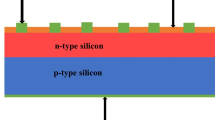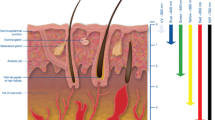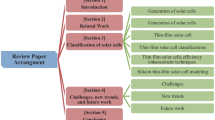Abstract
Optoelectronic devices, including optocouplers, are used in optical communication, controlling and sensing applications. Many of these applications are used under the influence of radiation; in some applications, it is difficult to shield the devices from radiation. The interaction of radiation with devices materials produces the defects. Several studies have been conducted on the effects of radiation on the optocoupler; most of them were interested in practical experiments, recording and describing the results. The behavior of an irradiated optocoupler still needs a mathematical model that can describe the optical and electrical characteristics of the device under the effect of radiation. This paper presents a mathematical model that includes the governing equations of the radiation effect in digital optocouplers. The validity of the model is verified by comparing its numerical values with the previous experimental results of neutrons and gamma radiations’ effects in one of the most popular digital optocouplers (4N49); the maximum error of the current transfer ratio of the device is 14% at 100 krad gamma dose and error reduces at the low doses. By adapting input parameters, this model can be applied to describe the effect of other types and doses of radiation on different types of optocouplers.









Similar content being viewed by others
References
Adachi S (1992) Physical properties of III–V semiconductor compounds InP, InAs, GaAs, GaP, InGaAs, and InGaAsP. Wiley, New York
Adell PC, Mion O, Schrimpf RD, Chatry C, Calvel P, Melotte MR (2005) Single event transient propagation through digital optocouplers. IEEE Trans Nucl Sci 52:4
Aukerman LW, Millea MF, McColl M (1966) Effects of radiation damage on the behavior of GaAs p–n junctions. IEEE Trans Nucl Sci NS-13:174
Baltateanu N, Gheorghiu A (2002) The use of linear electron accelerators in the study of semiconductor and optoelectronic device behavior due to irradiation. In: Proceedings of EPAC 2002, Paris, France, pp 2783–2785
Barnes CE (1979) Radiation effects in 1.06 um InGaAs LED’s and Si photodiodes. J Appl Phys 50(8):5242–5247
Brelski J, Hiemstra DM (2015) Predicting optocoupler life with radiation damage in various circuits. In: 2015 IEEE radiation effects data workshop (REDW)
Dotheyll D et al (1999) Irradiation tests of photodiodes for the ATLAS SCT readout. Nucl Instrum Methods Phys Res A 424:483–494
Geoffrey P, Edward A, Robert J (1993) Damage correlations in semiconductors exposed to gamma, electrons and proton radiations. IEEE Trans Nucl Sci 40(6):1372–1379
Germanicus R, Dusseau L, Saigne F, Barde S, Ecoffet R, Mion O, Calvel R, Fesquet J, Gasiot J (2002) Analysis of the proton induced permanent damage in an optocoupler. IEEE Trans Nucl Sci 49(3):1421–1425
Gorelick JL, Ladbury R (2004) Proton, neutron, and gamma degradation of optocouplers. IEEE Trans Nucl Sci 51:6
Green MA (2008) Self-consistent optical parameters of intrinsic silicon at 300 K including temperature coefficients. Sol Energy Mater Sol Cells 92:1305–1310
Hajghassem HS, Brown WD, Williams JG (1992) Modelling the effects of neutron irradiation on LEDs. Solid State Electron 35(1):51–55
Ikezawa K, Mitsuishi S, Maruyama T (2004) Proton irradiation experiments of optocouplers. Nucl Instrum Methods Phys Res B 215:449–456
Irom F, Allen GR (2016) Measurements of proton displacement damage in several commercial optocouplers. In: 2016 IEEE radiation effects data workshop (REDW)
Johnston AH (2003) Radiation damage in light-emitting and laser diodes. IEEE Trans Nucl Sci 50(3):689–703
Johnston AH, Miyahira TF (2005) Hardness assurance methods for radiation degradation of optocouplers. IEEE Trans Nucl Sci 52:6
Johnston AH, Miyahira TF (2007) LED technologies for optocouplers: fundamental issues and hardness assurance. IEEE Trans Nucl Sci 54:6
Johnston AH, Rax BG (2000) Proton damage in linear and digital optocouplers. In: Presented at 1999 RADECS conference; published in IEEE Trans Nucl Sci 47(3):675
Johnston AH, Swift GM, Miyahira T, Guertin S, Emonds LD (2001) Single-event upset effects in optocouplers. IEEE Trans Nucl Sci 45(6):2867–2876
Keiser G (2013) Optical fiber communications, 5th edn. McGraw-Hill Education, New York
Krishnan S, Sanjeev G, Pattabi M (2007) 8 MeV electron irradiation effects in silicon photo-detectors. Nucl Instrum Methods Phys Res B 264:79–82
LaBel K et al (1997) Proton-induced transients in optocouplers: in-flight anomalies, ground irradiation test, mitigation and implications. IEEE Trans Nucl Sci NS-44:1895
Lischa H, Henschel H, Kohn O, Lennartz W, Schmidt H (1993) Radiation effects in light-emitting diodes, photodiodes, and optocouplers. In: Proceedings of RADECS conference, pp 226–231
Mbarki M, Sun GC, Bourgoin JC (2004) Prediction of solar cell degradation in space from the electron–proton equivalence. Semicond Sci Technol 19:1081–1085
McMarr PJ, Nelson ME, Hughes H, Delikat KJ (2003) 14-MeV neutron and Co60 gamma testing of a power MOSFET optocoupler. IEEE Trans Nucl Sci 50:6
McPherson M (1997) Effects of radiation damage in silicon p–i–n photodiodes. Semicond Sci Technol 12:1187–1194
McPherson M (2005) Infrared photoconduction in radiation-damaged silicon diodes. J Opt A Pure Appl Opt 7:S325–S330
Miyahira TF, Johnston AH (2002) Trends in optocoupler radiation degradation. IEEE Trans Nucl Sci 49(6):2868–2873
Onoda S, Hirao T, Itoh H, Okamoto T (2006) Evaluation of transient current in Si PIN photodiode induced by high-energy charged particles. Proc Sch Eng Sch Inf Sci Tokai Univ 31:1–4
Paic G, Reggoug A, Hammer J, Chiadli A (1983) Radiation effects of 14 MeV neutrons on GaAs IREDs and optocoplers. Nucl Instrum Method 205:335–339
Pan Y, Inam F, Zhang M, Drabold DA (2008) Atomistic origin of urbach tails in amorphous silicon. J Phys Rev Lett 100(206403):1–4
Pattabi M, Krishnan S, Sanjeev G (2007) Studies on the temperature dependence of I–V and C–V characteristics of electron irradiated silicon photo-detectors. Sol Energy Mater Sol Cells 91:1521–1524
Rax BG et al (1996) Total dose and displacement damage in optocouplers. IEEE Trans Nucl Sci 43(6):3167–3173
Reed RA et al (1998) Emerging optocoupler issues with energetic particle-induced transients and permanent degradation. IEEE Trans Nucl Sci 44(6):2833–2841
Reed R et al (2002) Assessing the impact of the space radiation environment on parametric degradation and single event transients in optocouplers. IEEE Trans Nucl Sci 48(6):2202–2209
Reed RA, Marshall PW, LaBel KA (2004) Space radiation effects in optocouplers. Int J High Speed Electron Syst 14(02):401–417
Shaw GJ et al (1993) Time dependence of radiation-induced generation currents in irradiated lnGaAs photodiodes. Appl Phys 74(3):1629–1635
Srour JR, Lo DH (2000) Universal damage factor for radiation-induced dark current in silicon devices. IEEE Trans Nucl Sci 47(6):2451–2459
Tauc J (1974) Amorphous and liquid semiconductors. Plenum Press, New York
Wolter JH, Khoe GD, Haverkort JE (1999) Polarization independent interferometric switches based on III/V quantum theyll. Bastiaan Hendrik Peter Dorren, Eindhoven
Funding
The article was funded by Deanship of Scientific Research (DSR), University of Tabuk, Tabuk, Saudi Arabia (Grant no. 175/35).
Author information
Authors and Affiliations
Corresponding author
Additional information
Publisher's Note
Springer Nature remains neutral with regard to jurisdictional claims in published maps and institutional affiliations.
Rights and permissions
About this article
Cite this article
El-Hageen, H.M. Modeling the performance characteristics of optocoupler under irradiated fields. Multiscale and Multidiscip. Model. Exp. and Des. 3, 33–39 (2020). https://doi.org/10.1007/s41939-019-00058-x
Received:
Accepted:
Published:
Issue Date:
DOI: https://doi.org/10.1007/s41939-019-00058-x




